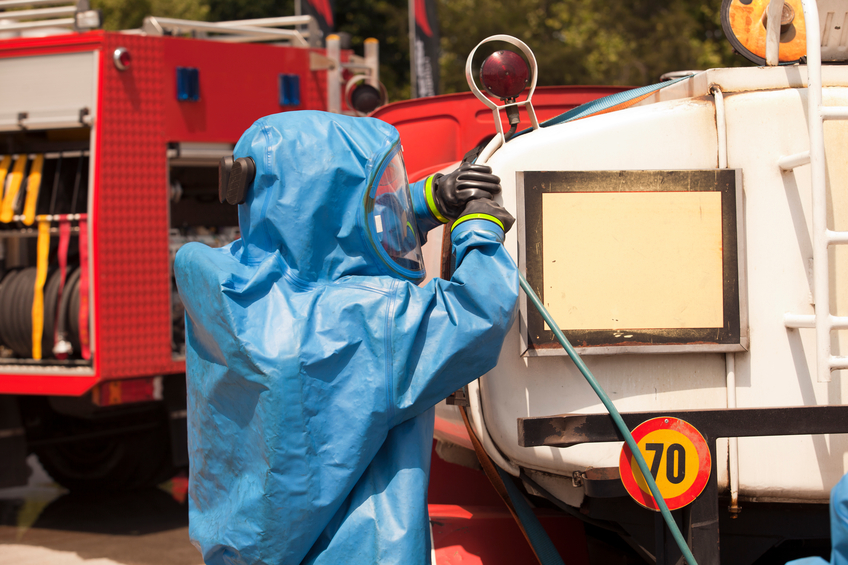Yesterday we looked at preventive measures that can keep a spill controlled and contained until it can be dealt with. But what happens when the spill control fails or when it was inadequate or absent in the first place?
 |
OSHA’s HAZWOPER standard (29 CFR 1910.120) includes, in Appendix C, advice for responding to hazardous materials spills that are not contained or that are poorly contained. Like the spill control and containment measures discussed in yesterday’s article, these measures require preplanning and a baseline knowledge of what sorts of spills you might need to deal with.
Controlling Spilled Materials
When you need to contain a spill that is outside a traditional containment area, OSHA recommends that you:
Protect workers. All workers performing hazardous substance spill control work must wear the proper protective clothing and equipment for the materials present and must follow the employer’s established standard operating procedures for spill control.
All involved workers should have been trained in:
- The established operating procedures
- The use and care of spill control equipment
- The associated hazards and control of such hazards of spill containment work
Reduce the hazard. For spilled acids or caustics, apply agents to the spill that can reduce the level of hazard by neutralizing the spilled material, if possible.
Have the right equipment ready. Spill control agents can be applied quickly and broadly using portable pressurized applicators similar to handheld portable fire extinguishing devices or nozzle and hose systems similar to portable firefighting foam systems. These allow the operator to apply the agent without having to come into close contact with the spilled material, and also to spread the spill control agent effectively and uniformly over a large area. These application techniques enhance the intimate contact between the agent and the spilled material allowing for the quickest effect by the agent or quickest control of the spilled material. In addition, the spill control agent can be applied at the leading edge of the spill first—or at run-off points— helping to create a “damming” effect that can slow or stop the spread of the spill.
Turn liquids to solids. Some spill control agents are available that can solidify liquid spilled materials. The solidification of liquids enables rapid containment and isolation of hazardous substance spills. Sometimes, these agents can totally solidify liquid hazardous substances or neutralize or absorb them, leaving waste materials that are less hazardous and easier to handle, transport, and dispose of.
Suppress vapors. Vapor suppression agents can be applied to spills of volatile hazardous substances, including flammable liquids and substances that present an inhalation hazard; this not only helps control the spill, but it also provides protection for workers. Both temporary and long-term foam-type agents can be used to effectively knock down vapors and dusts, and activated carbon adsorption agents can effectively control vapors and soak up liquids. Just as some agents can neutralize an acid or a base, others can raise the flash point, so that the resulting substance may be handled as a nonhazardous waste material if it meets the U.S. Environmental Protection Agency’s requirements.
Want more information on hazardous waste operations? Safety.BLR.com® won’t waste your time.
